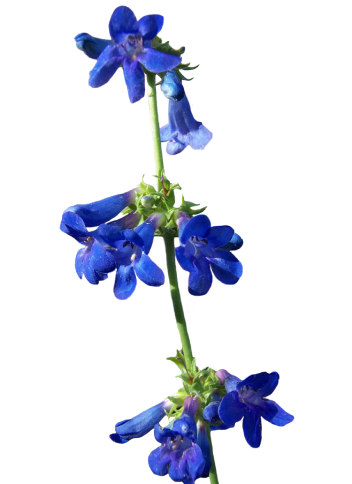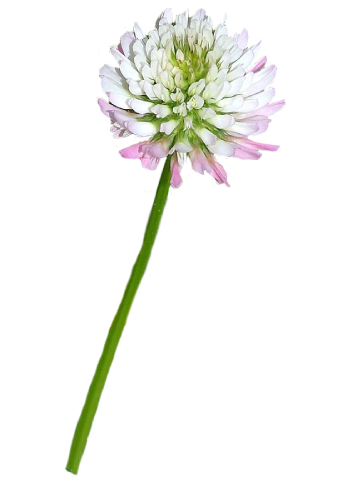
Herbal Essences join forces with the Royal Botanic Gardens, Kew
to help save endangered plants from extinction through seed banking
Endangered plants need our help - now more than ever
Plants underpin all life on Earth, providing the oxygen we breathe and the food we eat – they’re the backbone of the world’s ecosystems.
However, experts predict that one in five plant species is at risk of annihilation. This means that plants are going extinct two times faster than animals.
Herbal Essences wants to act now. So, we’ve partnered with the Royal Botanic Gardens, Kew to help protect some of the most threatened and endangered plant species. Biodiversity loss and threats to plant extinction exist everywhere, even close to our own backyards. Kew’s Millennium Seed Bank works with local partners around the world like the Center for Plant Conservation in Escondido, California to help conserve seeds from species at risk of extinction. Banking seeds acts as an insurance policy, protecting species for generations to come and even allowing us to reintroduce plants if their natural habitat has been destroyed.
Plant Blindness
Plants play a powerful role in our environment, nutrition and medicine. Just by being around plants, we can improve our physical and mental wellbeing.
Despite this, they are going extinct at twice the rate that animals face. Endangered plants are not getting the attention that they deserve.
When we walk down the road, hike in a forest, or gaze out in our garden, there are tens or hundreds of species right before our eyes. But we are wired to ignore their details and diversity. That is a phenomenon called plant blindness, and consequently, plant extinction is an urgent crisis that is often overlooked. We don't get excited about plants the same way we are passionate about animals. We might notice a squirrel in a tree, but not the moss, fungi, and type of tree it's sitting on.
In fact, a study from the Royal Botanic Gardens, Kew and Stockholm University found that plant biodiversity loss is the biggest missed issue of the last decade, with experts predicting that one in five plant species is at risk of annihilation.
We’re at a turning point and need to act now.
“Biodiversity loss is impacted by climate change; yet more attention is paid to climate change. My research at the Royal Botanic Gardens, Kew concentrates on how to stop biodiversity loss and in doing so realize the potential impact plants can have on a sustainable future – which is why it’s so critical to find solutions to protect against plant extinction”, said Professor Alexandre Antonelli, Director of Science at the Royal Botanic Gardens, Kew.
Seed Banking
A seed bank stores seeds to protect the genetic information of the plant species as part of conservation efforts around biodiversity as well as providing opportunities to save and research plants. Seed banking offers a way to preserve a seed so it can be reintroduced into nature in the future.
Seed banks exist all over the world and require a low temperature and low moisture environment to store the resting seeds. Seed banks are essentially seed libraries for the future. When stored correctly, seeds can remain viable for decades or even centuries.
Kew’s Millennium Seed Bank works with partners and seed banks across the globe to help with the conservation of seeds from these species of plants. This helps to protect and preserve plants that face natural habitat destruction and safeguard them from extinction.
Plants Power Our Lives, Let’s Return the Favor
Plants power everything - from diet and medicine, to beauty, to making the world a more joyful place. However, plants are going extinct two times faster than animals*. They urgently need our help.
Herbal Essences is committed to supporting Kew’s Millennium Seed Bank to help save threatened and endangered plant species. We are not only supporting seed banking, but also helping drive awareness about biodiversity loss and eradicating plant blindness. We can all play a role in protecting our plants.
*research study between scientist at Stockholm University and the Royal Botanic Gardens, Kew
Save 20 in 2020 : Learn more about the 20 endangered plant species we are helping protect in the USA

Grand Mesa Beardtongue
With spikes of sky blue, the Grand Mesa Beardtongue adds beauty to the world and delights hummingbirds. Conservationists recently secured 10,000 seeds to help safeguard this species from extinction.

Bicknell’s Hawthorn
Exclusive to the island of Nantucket, Bicknell’s Hawthorn is a hidden gem with showstopping white and pink flowers. Threatened by fungal infection, seeds of this plant are being held at the Millennium Seed Bank to help against future species decline.

Southern Appalachian Purple Pitcherplant
One of the few carnivorous plants in North America, the Southern Appalachian Purple Pitcherplant traps and digests flying and crawling insects. Poached by over-zealous plant collectors for its striking appearance, fewer than 12 populations remain in their native Appalachia.

Blue Ridge Huckleberry
Birds and mammals love the black juicy berries of the Blue Ridge Huckleberry. Native to the bogs of North Carolina, this species is critically imperiled due to habitat loss. Conservationists are working to collect seeds from two known sites in an effort to save the species.

Pineland Clustervine
With bloom colors from sky blue to pinkish-lavender, the flowers of the Pineland Clustervine are small, but showy. Urban development across Florida is threatening this member of the morning glory family, but conservationists are collecting seeds across eight locations to protect it from extinction.

Avery Peak Twinpod
Bearing clusters of yellow flowers, the Avery Peak Twinpod is a bright and unexpected sight while traversing the Rocky Mountain terrain. Off-road vehicles are the biggest threat to their survival and environmentalists are traveling to great heights to collect seeds to safeguard its survival.

Ojai Fritillary
Named for the city of Ojai and part of the lily family, the Ojai Fritillary is a sight to behold in the woodlands of central California. Endangered by hikers and campground activities, conservationists are working to collect seeds in Los Padres National Forest.

Venus Fly Trap
The Venus Fly Trap is famous for its ability to ensnare insects and spiders in its spiky, mouth-like clutches. These unique talents make them a target for poachers who over-collect them, leading to a shortage in the wild. Environmentalists are working to bank seeds in North Carolina to protect them in the future.

Lehua Mamo
The Lehua Mamo is a Hawaiian beauty known for its color and use in lei making. The growth range is limited to the island of Oahu, making seed collections imperative to ensure the long-term longevity of this plant.

Douglas Clover
The vibrant pink Douglas Clover graces prairies and meadows of the Pacific Northwest. Delicious to livestock, this species is vulnerable to trampling and grazing. Conservationists collected seeds from 50 clover plants to protect against habitat degradation.

Shortleaf Liveforever
Despite its name, the Shortlead Liveforever is in jeopardy of extinction due to its small size. Many unwitting hikers do not see these tiny succulents while traversing the bluffs in San Diego, California. Seeds have been collected from all five remaining Shortleaf Liveforever populations in an effort to protect against extinction.

Pioneertown Linanthus
Boasting bright pink-purple flowers, the Pioneertown Linanthus blooms for a short time each spring. More than 6,000 seeds from this desert annual have been banked to prevent it from slipping back into obscurity.

Houston Tanyaster
The Houston Tanyaster is a rare and vibrant member of the daisy family. Restricted to a few small populations in Houston, Texas, they are threatened by invasive plants and urban development. Botanists recently made a conservation seed collection to protect the population from being lost forever.

San Luis Obispo Mariposa Lily
Despite its delicate appearance with petals that resemble the colorful wings of a butterfly, the San Luis Obispo Mariposa Lily thrives in harsh environments. Devastating fires that raged through central California in 2018 have put this species at risk.

Blodgett’s Swallow-Wort
Blodgett’s Swallow-Wort is a delicacy to leaf-munching caterpillars and nectar-drinking adults. This viny milkweed is critically imperiled due to urbanization. Conservationists collected more than 1,500 seeds from seven populations to ensure this species thrives for years to come.

Spanish Needle Onion
A rare species of wild onion, the Spanish Needle Onion lives below ground as a bulb for most the year but shows off deep crimson flowers every June. Seeds were recently collected from a rocky outcrop in the Sierra Nevada mountains to ensure this species survives.

Downy Indian-Paintbrush
Known for their vivid colors, the flowers of the Downy Indian-Paintbrush are edible and were consumed in moderation by Native American tribes. As climate change forces species to migrate upslope on mountains, this species is at risk of losing its unique habitat.

Willowy Monardella
A member of the mint family, the Willowy Monardella has familiar bright purple flowers. Very sensitive to the recent drought conditions in southern California, conservationists collected seeds from four populations to safeguard them from future climatic disturbances.

Torrey’s Mountainmint
Simultaneously elegant and funky, the flowers of the Torrey’s Mountainmint are a playground for bees, wasps, flies, butterflies and beetle pollinators. Degraded by timber harvesting in recent years, conservationists have collected 15,000 seeds to prevent extinction.
